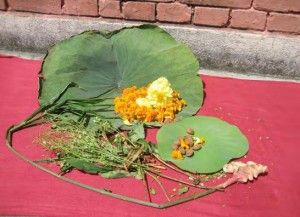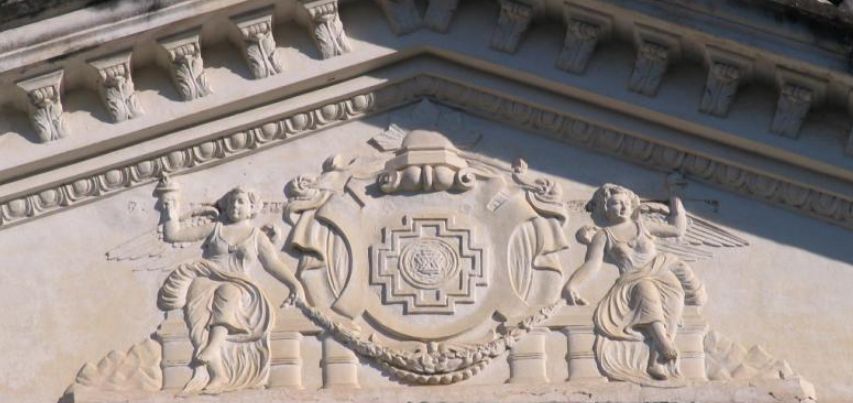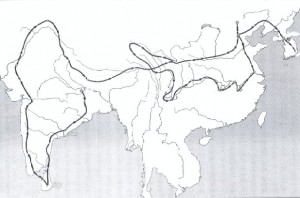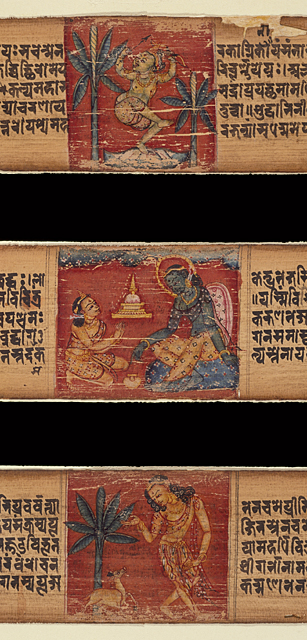Stout, Daniel R. ‘How the Buddhist concept of Right Speech would be applied towards diplomatic actions using the media: a case study from the 2002 State of the Union’. M.A. thesis, 2009. [http://hdl.handle.net/2097/1485/PDF]
From the Abstract

Stout, Daniel R. ‘How the Buddhist concept of Right Speech would be applied towards diplomatic actions using the media: a case study from the 2002 State of the Union’. M.A. thesis, 2009. [http://hdl.handle.net/2097/1485/PDF]

Nika Jovic. The Cult of the ’Go ba’i lha lnga: A Study With Pictorial and Written Material of the Five Personal Deities. M. A. thesis, Universitat Wien, 2010. 148 pp. [official site / PDF]
This thesis contains editions and translations of several Tibetan ritual texts: the ’Go ba’i lha lnga’i bsangs mchod by Ku saʼ li dha rma ba dzra (A), the ’Go baʼi lha lngaʼi bsang chog by Ku sa li dha rma ba dzwa (B), the ’Go ba’i lha lnga’i bsangs chog by the Ku sa li dha rma ba dzra (C) ‘Go ba’i lha lnga’i bsangs mchod by Ku sa li dha rma bdzra (D), the ’Go ba’i lha lnga’i bsangs mchod by Su pra mi dha rma ba dzra (E), the Lha lngaʼi gsol mchod bsod nams dpal skyed by Zhor sngags smyon (F), the ’Go ba’i lha lnga’i gsol mchod bsang dang bcas pa yar ngoʼi zla rgyas zhes bya ba by Ka rma ngag dbang yon tan rgya mtsho (G), the ‘Go ba’i lha lnga’i gsol mchod phen bdeʼi ʻdod ʻjo zhes bya ba by bTsun gzugs bLo bzang chos kyi nyi ma (H) and others.
The following work is based upon my research on transcendental beings (Tib. lha) who belong to the category of Tibetan protective deities (Tib. srung ma). Continue reading “Jovic, ‘The Cult of the ’Go ba’i lha lnga’ (2010)”

Astrid Zotter (née Krause). ‘Pūjā-Blüten in Nepal: Bestimmungen des Puṣpacintāmaṇi‘. Universität Leipzig: PhD dissertation, 2009. [In German; PDF] 408 pp., illus.
Dr. Zotter’s dissertation on the medieval flower-offering manual Puṣpacintāmaṇi presents a critical edition of the Sanskrit and Newar texts, and discusses the role of this important work in Nepal from the reign of Pratap Malla onwards. This is a new milestone in Newar studies, and more generally another welcome contribution to the study of the transmission of Sanskrit texts and vernacular translations in medieval South Asia. A few words from the abstract (roughly translated):
The Sanskrit text Puṣpacintāmaṇi (PuCi) treats flower offerings (upacāra) in the most important worship ritual of Hinduism, the pūjā. In 400 verses, about 200 names of flowers prescribed as appropriate or inappropriate gifts for various deities and pūjās are listed. The text is a compilation (nibandha), in which the contents of 47 named source texts are reported. […]
The aim of the thesis is not only to edit this text, which was published for the first time in 1966, anew on the basis of all traditional manuscripts and to translate it for the first time, but also to fit it into its context. Here, the context of the historical development of the text, the position of the PuCi in the textual tradition and the varieties of interpretation are taken into account. […] Continue reading “Zotter, ‘Pūjā-Blüten in Nepal’; on the Puṣpacintāmaṇi (2009)”
Katharina Maria Lucia Weiler. ‘The Neoclassical Residences of the Newars in Nepal: Transcultural Flows in the Early 20th century Architecture of the Kathmandu Valley’. PhD diss., Ruprecht-Karls-Universität Heidelberg, 2009. [abstract / PDF (40 MB)]
Almost as good as being there, this lavishly illustrated dissertation treats an important architectural subculture of the Kathmandu Valley. Weiler looks closely at the stylistic origins of buildings built by people who wanted to emulate Europe, while remaining tantric Hindus and Buddhists at heart. This lucid description of a relatively recent strand in the rich tapestry of Newar urban life is commended to aficionados of Nepalese taste.

C. Pierce Salguero. Buddhist Medicine in Medieval China: Disease, Healing, and the Body in Crosscultural Translation (Second to Eighth Centuries C.E.). PhD diss., Johns Hopkins University, March 2010. 395 pp. [abstract at author’s site/PDF]
Abstract
This dissertation is a study of the role of literary and cultural translation in the transmission and reception of Buddhist medicine in medieval China between the second and eighth centuries. This dissertation brings to light the diversity of medical material in the Chinese Tripitaka, analyzes the central metaphors and discourses in this corpus, and examines how these foreign medical ideas were understood in their historical context. I employ methodologies from Translation Studies to reconcile the study of the transregional exchange of linguistic and cultural repertoires with the agency of individual historical authors as they retooled and adapted foreign knowledge to forward contemporary social strategies. I utilize this theoretical framework to analyze how Indian medical doctrines influenced Chinese Buddhist discourses and practices, while also emphasizing the importance of disease, healing, and the body as sites of crosscultural negotiation.
[via kuden-ML]
David V. Fiordalis. Miracles and Superhuman Powers in South Asian Buddhist Literature. PhD diss., University of Michigan, 2008. 232 pp. [HDL / PDF]
Scholars have long been aware of the presence of marvelous events in Buddhist literature. While it is now more fashionable to speak about them, some still hesitate to use the word miracle in reference to Buddhism. Paying attention to how Buddhists defined their own terms, this dissertation argues that the concept of the miracle is appropriate to use in translating specific Buddhist terminology. The present study examines the narrative and scholastic language Buddhists used to denote and classify various types of miracles and superhuman powers. […] Continue reading “Fiordalis, ‘Miracles in South Asian Buddhist Lit’ (2008)”
Ronald James Dziwenka. ‘The Last Light of Indian Buddhism’ — The Monk Zhikong in 14th Century China and Korea. PhD diss., University of Arizona, 2010. 406 pp. UMI Number: 3412160. [Thanks to A. M.]

dissemination and reception of his thought and soteriological paradigm of practice from his native state of Magadha, then Sri Lanka, and then throughout India, Yuan China and Goryeo Korea. The other is [to] explicate the main elements and concepts of his thought and present them to the academic community.
Märt Läänemets. ‘Gaṇḍavyūha-sūtra kui ajalooallikas (The Gaṇḍavyūha-sūtra as a Historical Source)’. Dissertationes Historiae Universitatis Tartuensis 17. PhD diss., Tartu University, 2009. 281 pp. [abstract / PDF]

Läänemets’ dissertation, written in Estonian, also comes with a detailed English summary (pp.263‒274).
Allow me to briefly take up a couple of points mentioned in the summary. Firstly, it is surprising that the writer concludes that the Gv was composed in Central Asia “on the basis of extra-textual historical facts”, even though it is pointed out that the action takes place almost entirely in identifiable sites in South India (p.269).
Secondly, it is stated that the “Gv reached Nepal… no later than the middle of the 12th century, but likely a century or two earlier” (p.268). Here Läänemets refers to an MS dated ~1166 CE, which he describes as the oldest and “only [this must be a typo] extant text”. There is no reason to think that the Gv was not circulating in Nepal in approximately the same period that it began to circulate in the rest of South Asia, even if very few palmleaf MSS have survived. For instance, Kamalaśīla, who prescribes the recitation of the Bhadracārī (which was attached to the Gv by Kamalaśīla’s time, the late eighth century) as part of a bodhisattva’s routine in his first Bhāvanākrama, is said to have resided in Nepal, where such texts were presumably already well known.
One Nepalese MS which is not mentioned is an illustrated palmleaf codex, preserved in just a few folios across two collections in the United States: at LACMA [see right; link], and Brooklyn Museum [link]. Although the folios at LACMA have been studied by the inimitable Dr. Gautam V. Vajracharya, I do not know whether these two remarkable leaves have been identified as constitutents of the same codex, as they manifestly appear to be.
Mattia Salvini. ‘Convention and agency in the philosophies of the Mahāyāna.’ PhD diss., Dept. of Study of Religions, School of Oriental and African Studies, 2008. 369 pp. [worldcat]
The thesis focuses on the relationship between Sanskrit classical grammar, Abhidharma, and the debates between Madhyamaka and Yogācāra. In particular, it shows how the kāraka system, and the idea of lakṣaṇa, influence philosophical argumentation in the context of medieval Indian Buddhist thought. […] Continue reading “Salvini, ‘Convention and agency in Mahāyāna’ (2008)”
Andrey Klebanov. The *Nepalese Version of the Suśrutasaṃhitā and its Interrelation with Buddhism and the Buddhists. M. A. thesis, University of Hamburg, 2010. 223 pp.
Continue reading “Klebanov, ‘Suśrutasaṃhitā & Buddhists’ (2010)”